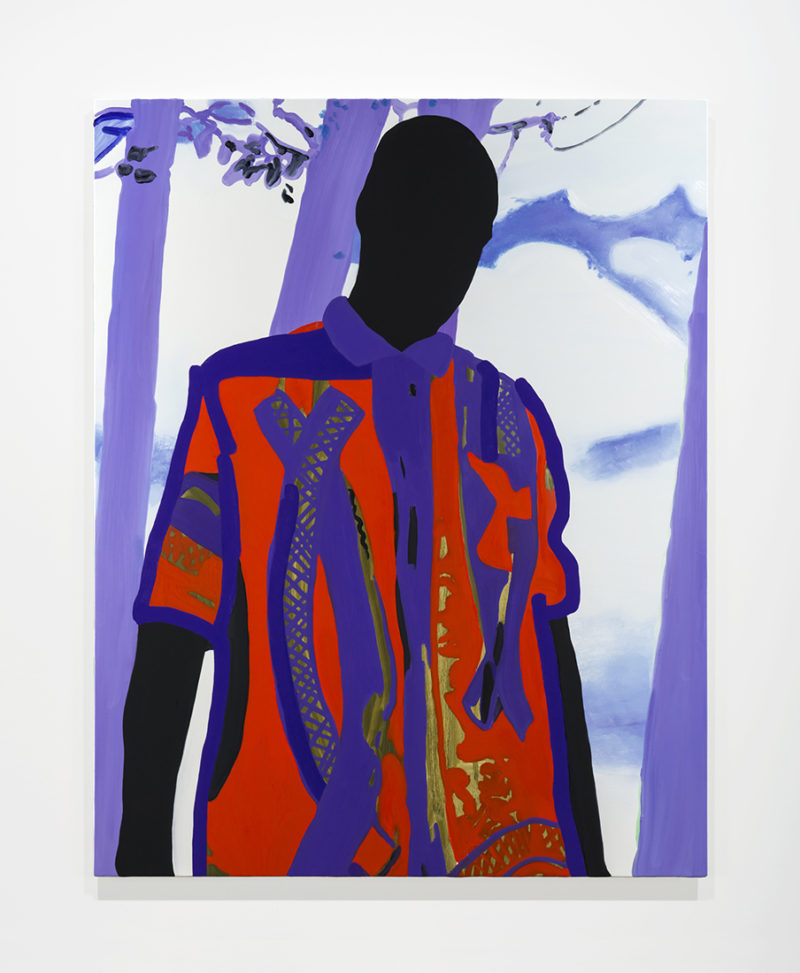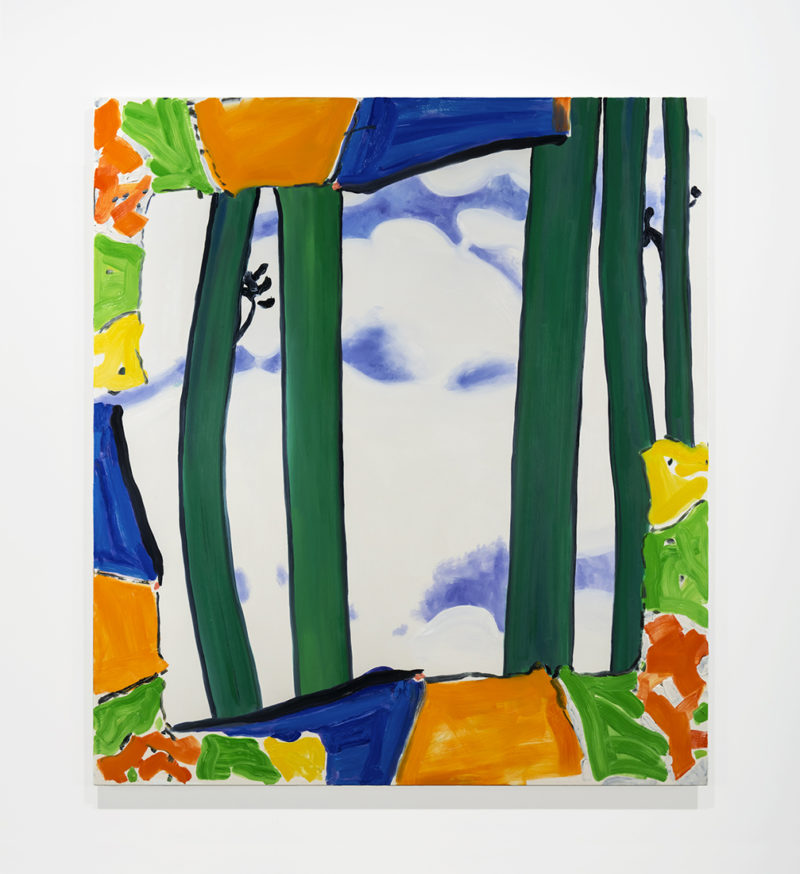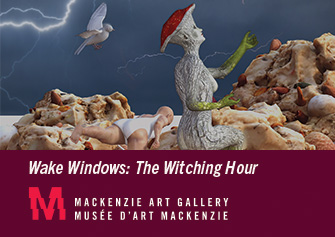Night Sweat: Elizabeth McIntosh at Tanya Leighton Gallery
26 June 2019
By Jasmine Reimer
I’ve always admired the energy with which Elizabeth McIntosh delivers paint. It’s not dramatic and performed like slinging or flinging or pouring. It’s spontaneous and less grandiose, instantaneous like a thought that propels you out of a chair. I can trace her movements with my eye and then vicariously with my body and, as a result, feel a satisfying connection to her via an understanding of her gestures. In her newest body of work at Tanya Leighton Gallery in Berlin, McIntosh sustains the ease of this maker-viewer relationship while giving us something we didn’t know we wanted, like a devoted and yet savvy lover. Said with less sexuality, her new series of paintings titled Night Sweat, open up the often controlled and organized illusionistic space of abstract painting, allowing for the formal and historic to become personal and specific.
Night Sweat starts off gentle. Angels (2018) displays five bold green lines of various thicknesses. They barricade a bright, mostly white, clouded sky. All of this is framed by painterly forms filled in with colours and gestures that suggest a jovial combination of fruits and Crayola® green grasses. For all intents and purposes, it’s a kitchen window. But the suggestive title of the exhibition remains in my mind like a footnote. Night Sweat signifies a period of hot, damp unrest. In the absence of sleep, there are often dreams, and it is said that the sky in a dream signifies the overall tone. In Angels things are light and positive. McIntosh revisits the green bars in nearby paintings; rendered in lavender in Listen (2018) and charcoal-green in Wild Grapes (2018)—but in these works they evidence more representational tree-like forms.
I recognize the figure in Listen to be McIntosh’s partner, his posture and the angle of his downward gaze specific to his persona and bodily height. The figure is foreground to another energetic sky. What’s most interesting to me is the proximity of the works, the way that each one feels extremely close, as if enlarged: they are intimate in the same way that only the person dreaming can fully ‘see’ the scenes of their dreams. I first noticed this relationship in Listen, an apt title for drawing a person nearer but also appropriate given McIntosh’s personal relationship to her subject. This close-up effect endures throughout the exhibition, and I sense that although it might have to do to with the proportions of the canvases, it is more a matter of McIntosh’s unique ability to confront. The immediacy of her paintings is achieved through a honed ability to remain unburdened by the need to officially finish a painting while still satisfying us with a sense of resolution. (In Listen, strident violet lines make up a pattern on the man’s searing red shirt. They run off the edges a little, making beautiful purple nubs on the shoulders.) This is particularly evident in the work titled Wild Grapes, where the seaweed-coloured trees become a purple sphinx’s body, hovering somewhere above the point where the cat’s legs begin. Declaring and celebrating the possibility of a conspicuous transition, McIntosh reinvents familiar forms and shapes via decisions that seem like chance meetings, moving us from the abstract into the surreal and representational, from the illusionistic mind to the sensational body.

And it is here that my heart starts to work alongside my brain. Shifting from the peaceful realm of painting comprised of composition, foreground, background, and brushstroke, Wild Grapes and Eyes, (2018) show us the wilderness that is an artist’s intention. I was surprised to see such deliberate subconscious imagery and welcomed the journey into McIntosh’s ideas, and my own. Partially obfuscated by trees densely clustered with obscenely ripe purple ‘grapes,’ Wild Grapes features a notably large cat peering outward with one green eye. Behind the dark abundant fruit, autumnal and uneven highlighting emphasizes their maturity and allows the cat and its lime-like eyeball to remain momentarily camouflaged. This is an impressive painterly feat as the cat’s body takes up more than one third of the image, its tail rests on the bottom right of the canvas and the background is sky-blue. It is only through a delicious muddling of form and colour that McIntosh is able to initiate this dimensional experience: somehow, she is able to choreograph a slow reveal akin to actually, physically, encountering time and place.
Eyes is installed around the corner of the gallery, keeping it distinct from the other works in both space and content. The entire left half of the painting is dedicated to the face and bust of a female with dark black hair, partly pulled to one side with a splotch of fuchsia, and two light aqua highlights that could be euphemistic stand-ins for grey hair. The face is incredible. The mysterious compote displayed in Wild Grapes reappears as flush in the woman’s cheeks, shoulders and breast, and again within an oversized, painted glass pitcher next to her. The vessel is painted with complex and attentive brushstrokes made to indicate not the colour of the glass itself, but its luminosity. Inside the carafe, McIntosh declares the red organ-like. It is a kidney, iron rich, floating in the middle of the decanter. Fulfilling the show’s promise of heat and liquids, the painting alludes to familiar art-historic symbolism involving women and objects. It is here that McIntosh’s work becomes more clearly feminist. While painting her partner demonstrates the personal-exterior, Eyes explores the specificities of an interior female narrative. Sweating regularly during the night, for a woman, indicates some kind of imbalance, hormonal or digestive perhaps, and often occurs in conjunction with menopause and aging. Making the personal political is a longstanding feminist (creative) undertaking alongside subverting the (male) gaze.

Eyes has an intimidating vitality. It displays adrenaline, signifying increased heart rate, arousal and blood vessels filling with blood; resulting in an image that keeps me suspended somewhere between the maker and the viewer. And it’s in this relationship that I am most satisfied when looking at paintings. Being both participant and observer, I can watch with ready attention as McIntosh redefines my visceral body by reworking historic artistic codes and materials. With Eyes I am equally gaze and object. After revisiting the other works in the show, I found this unique position unavailable via the other paintings. This work, with its blood-full vessel and ensanguined female flesh, provides access to an ‘inside’ that any interpretation of the space between background and foreground denies.
I suppose that this is a result of the artist’s faith in instinct, something highly tangible but so sweetly inward that it is essentially untranslatable. In an interview promoting the artist’s inclusion in Phaidon’s Vitamin P3, McIntosh uses the word ‘distance’ to discuss the difference between the events of the world and what happens in her studio. I would argue that this is a substantial component in the understanding and enjoyment of her work. The exquisite expanse delivered in Night Sweat is a territory not unlike a universe comprised of material, spiritual and intellectual, macro and micro. The states of her paintings indicate not only a combination of exterior influences mixed with personal everyday minutiae, but also the feelings she might have about them. Not applied like paint but more like patina, McIntosh’s paintings allow us to feel via osmosis or absorption of colour and form, like sheets being stained.
Night Sweat ran from January 26 – March 2, 2019 at Tanya Leighton Gallery in Berlin, Germany.
Feature Image: Installation view of Night Sweat. From left: Wild Grapes; Eyes; Sparkle; all 2018. Photo courtesy of Tanya Leighton Gallery.



